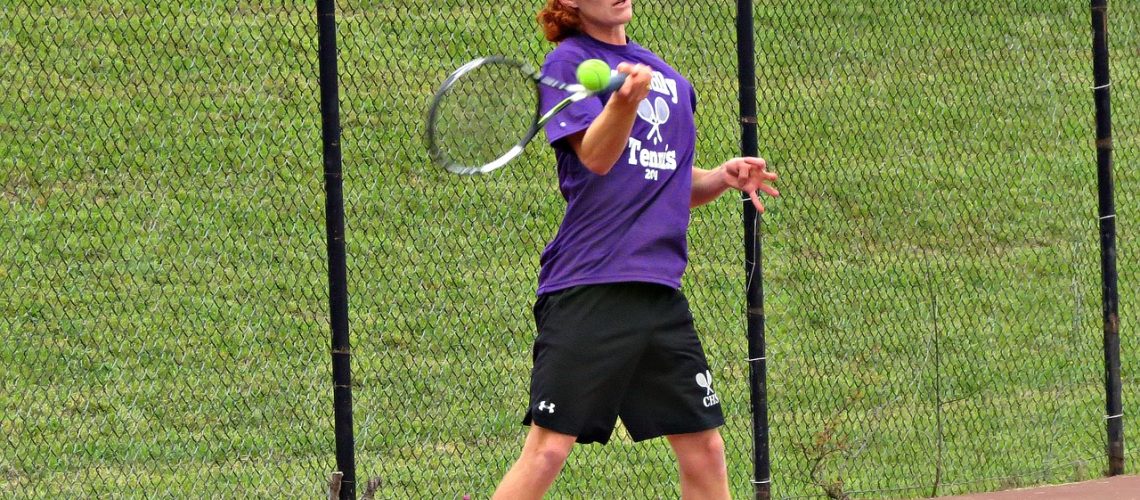We may earn money or products from the companies mentioned in this post.
Introduction

When it comes to women’s tennis, the recruitment process can be a pivotal moment in a player’s journey It’s not only about showcasing your skills on the court but also about being proactive and taking charge of your future In this article, we will explore the importance of being proactive in seeking opportunities and understanding the various levels of collegiate tennis
The Importance of Being Proactive
In the world of women’s tennis recruitment, being proactive is key Waiting around for coaches to discover you may not yield the results you desire Instead, take control of your destiny by actively seeking out opportunities and making connections with college coaches
Start by creating a compelling player profile that highlights your achievements, skills, and goals Share this profile with college coaches who align with your aspirations Attend tournaments and showcase events where coaches are likely to be present, giving them a chance to see you in action
Additionally, reaching out directly to coaches through email or phone calls can make a significant impact Expressing your interest in their program and demonstrating knowledge about their team can show dedication and enthusiasm
Understanding Collegiate Tennis Levels
Collegiate tennis offers different levels of competition, ranging from Division I to Division III, as well as NAIA schools Understanding these distinctions is crucial when navigating the recruitment process
-
Division I:
The highest level of collegiate tennis, Division I programs typically have larger budgets and attract top-ranked players from around the world These teams often compete at a national level and offer scholarships -
Division II:
Division II schools also provide competitive tennis programs but may have slightly smaller budgets compared to Division I programs Scholarships are available at this level as well -
Division III:
Division III schools prioritize the balance between academics and athletics They do not offer athletic scholarships, but they provide opportunities for student-athletes to compete at a high level while focusing on their education -
NAIA:
The National Association of Intercollegiate Athletics (NAIA) offers another pathway for women’s tennis players NAIA schools provide competitive tennis programs and scholarships, similar to Division II institutions
By understanding these different levels, you can target programs that align with your athletic abilities and academic goals Researching each school’s tennis program and assessing whether it suits your playing style and aspirations will help you make informed decisions during the recruitment process
In conclusion, being proactive in women’s tennis recruitment is crucial for aspiring athletes By taking charge of your future, connecting with coaches, and understanding the collegiate tennis landscape, you can increase your chances of finding the right fit for both your athletic and academic endeavors So don’t wait around – start taking action today!
Building a strong foundation for recruitment

When it comes to building a strong foundation for recruitment in tennis, developing your skills and ranking is crucial There are several key steps you can take to enhance your tennis journey
1 Participating in junior tournaments and leagues
To showcase your talent and gain valuable experience, participating in junior tournaments and leagues is essential This includes competing in prestigious events such as USTA tournaments, ITF events, as well as representing your high school team
2 Tennis training programs and clinics
To further improve your skills, enrolling in tennis training programs and clinics can provide you with specialized coaching and practice opportunities These programs help refine your technique, strategy, and overall game
3 Importance of having a solid Universal Tennis Rating (UTR)
Achieving a solid Universal Tennis Rating (UTR) carries significant weight in the college recruitment process It serves as an objective measurement of your playing level, allowing coaches to assess your potential contributions to their teams accurately
Academic preparation for college eligibility

In addition to honing your tennis skills, academic preparation plays a vital role in securing college eligibility Here are some key points to consider:
1 Maintaining good grades in high school
Colleges prioritize student-athletes who demonstrate academic excellence alongside their athletic abilities Maintaining good grades throughout high school is crucial for meeting eligibility requirements set by organizations like the NCAA or NAI
aGuidance on GPA requirements at different levels (NCAA, NAIA, etc)
GPA requirements may vary depending on the athletic organization you aspire to join Researching the specific GPA requirements for different levels of college athletics will help you stay on track and ensure your academic eligibility
2 Preparing for standardized tests (SAT/ACT)
SAT and ACT scores are often used by colleges to evaluate potential student-athletes Preparing diligently for these exams can significantly impact your eligibility and increase your chances of being recruited
3 Researching NCAA eligibility requirements
Each athletic organization, such as the NCAA, has its own set of eligibility requirements that you must meet to compete at the collegiate level Familiarize yourself with these guidelines early on to ensure you’re taking the necessary steps towards meeting them
Reaching out to college coaches and showcasing your talent

When it comes to pursuing a college sports career, reaching out to college coaches and showcasing your talent is crucial But where do you start? Firstly, it’s important to identify target schools based on your athletic and academic goals Consider factors such as location, team level, size, and program offerings Finding the right fit will greatly increase your chances of success
Identifying target schools based on athletic and academic goals
In order to reach the right colleges for you, it’s essential to consider both your athletic and academic goals Think about what level of competition you want to play at – Division I, II, or III? Also, consider the type of academic environment that would suit you best Do you prefer a small liberal arts college or a large university? By considering these factors, you can narrow down your list of potential schools
Creating an engaging player resume or profile
To catch the attention of college coaches, you need an engaging player resume or profile that highlights your skills and achievements Include personal information such as height, weight, position, and contact details Additionally, include any rankings or ratings you have received from reputable sources Don’t forget to showcase tournament results that demonstrate your ability to compete at a high level Lastly, add photos or videos that truly showcase your skills in action
Networking with college coaches and attending college camps
The next step is networking with college coaches directly Initiate contact by sending them an email introducing yourself and expressing interest in their program Include relevant information from your player resume or profile while keeping the message concise yet impactful After making initial contact, be sure to follow up appropriately by sending thank-you notes or additional updates on your progress
To further showcase your talent and build relationships with college coaches, consider attending tennis camps or showcases where coaches are present These events provide an opportunity for coaches to see you play in person and assess your skills firsthand Make the most of these opportunities by giving it your all on the court and networking with coaches during breaks
How to leverage social media to gain exposure
In today’s digital age, leveraging social media can be a game-changer when it comes to gaining exposure Create profiles on platforms such as Instagram, Twitter, or YouTube, and regularly share content that highlights your skills and accomplishments Engage with other players, coaches, and fans in your sport’s community to expand your network and increase your visibility
The importance of official and unofficial visits
Lastly, official and unofficial visits are crucial steps in the recruiting process Official visits are typically offered by colleges once they have shown genuine interest in recruiting you These visits allow you to experience campus life firsthand, meet the coaching staff, and get a sense of whether the school is the right fit for you both athletically and academically
Unofficial visits, on the other hand, are self-funded trips where you visit colleges without an invitation from the coaching staff While less formal than official visits, they still provide valuable insights into the school’s atmosphere and facilities
Managing Scholarship Offers and Making a Decision

When it comes to managing scholarship offers, women’s tennis players have several types of scholarships available to them These scholarships can greatly impact their college experience and future career Let’s explore the different types of scholarships that are commonly offered:
Athletic Scholarships
Athletic scholarships are specifically designed for talented athletes who excel in their sport, such as tennis These scholarships are awarded based on the athlete’s skills and potential contributions to the college team They often cover tuition fees, accommodation, and other expenses
Academic Scholarships
Academic scholarships recognize exceptional academic achievements Women’s tennis players who have maintained outstanding grades throughout high school may be eligible for these scholarships Academic scholarships can help reduce the financial burden of attending college while still allowing athletes to continue playing tennis
Partial vs Full-Ride Scholarships
Scholarships can vary in terms of coverage Some may offer partial financial assistance, covering only a portion of tuition fees or other expenses On the other hand, full-ride scholarships provide comprehensive coverage for all college costs, including tuition, room and board, textbooks, and more It’s important for women’s tennis players to understand what is being offered before making a decision
Navigating the Scholarship Negotiation Process

How to Communicate with Coaches about Offers and Financial Aid
Negotiating scholarship offers requires effective communication with college coaches Women’s tennis players should proactively reach out to coaches expressing their interest in attending their institution and discussing any scholarship offers they have received This gives athletes an opportunity to emphasize their skills, accomplishments, and potential value to the team
Making a Decision on Which College to Attend

Weighing Pros and Cons of Each Option
Choosing a college can be a difficult decision for women’s tennis players It involves considering various factors, such as the strength of the tennis program, academic reputation, location, campus culture, and financial considerations It’s important to carefully weigh the pros and cons of each option before making a final decision
National Letter of Intent (NLI) Signing Process

Once a decision has been made on which college to attend, women’s tennis players will go through the National Letter of Intent (NLI) signing process The NLI is a binding agreement between the athlete and the college/university stating that they will attend that institution for at least one year in exchange for financial aid This formalizes their commitment to play tennis at the collegiate level
Useful Links

Women’s Tennis Scholarships Guide & FAQ 2022
University of Chicago Women’s Tennis Recruit Questionnaire
The Tennis Recruiting Network
UCF Women’s Tennis Recruiting Class Ranked No. 2 in …
Women’s Tennis Recruiting
Women’s Tennis Recruiting Standards
Women’s Tennis Recruiting
Women’s Tennis Recruiting Form
5 tips on How to get Recruited to be a D1 Tennis Player
College Tennis Recruiting – Find a College Team
Tennis Scholarships. College Tennis Recruiting.
Georgia Tech Women’s Tennis Recruiting Central
Tennis Scholarships | Get Recruited – Athlete +
The Keys to Making Your Tennis Recruiting Video
College Tennis Recruiting
Babson College Women’s Tennis Recruiting Form
College Recruiting
Women’s Tennis Lands Another Ranked Recruiting Class






